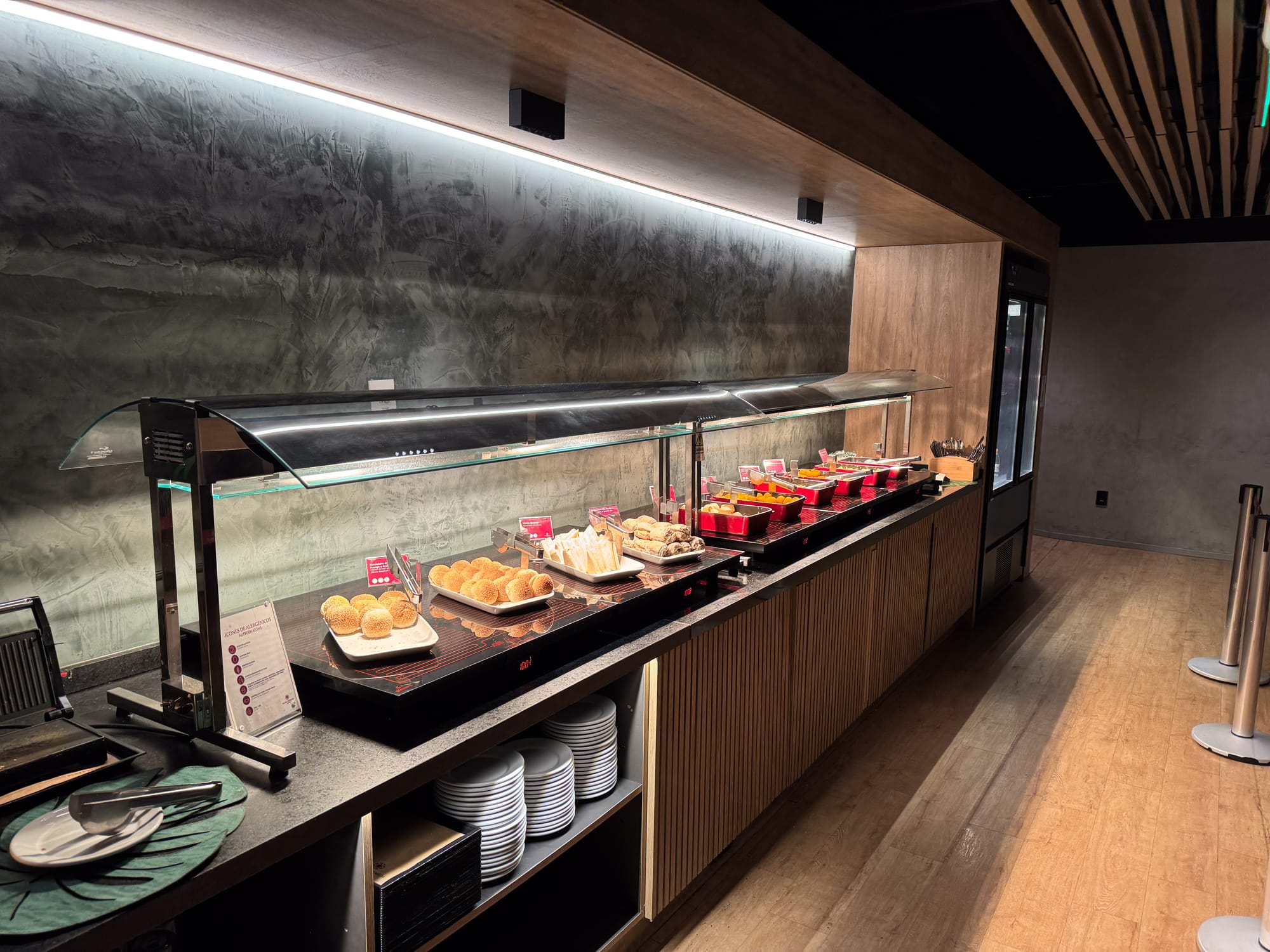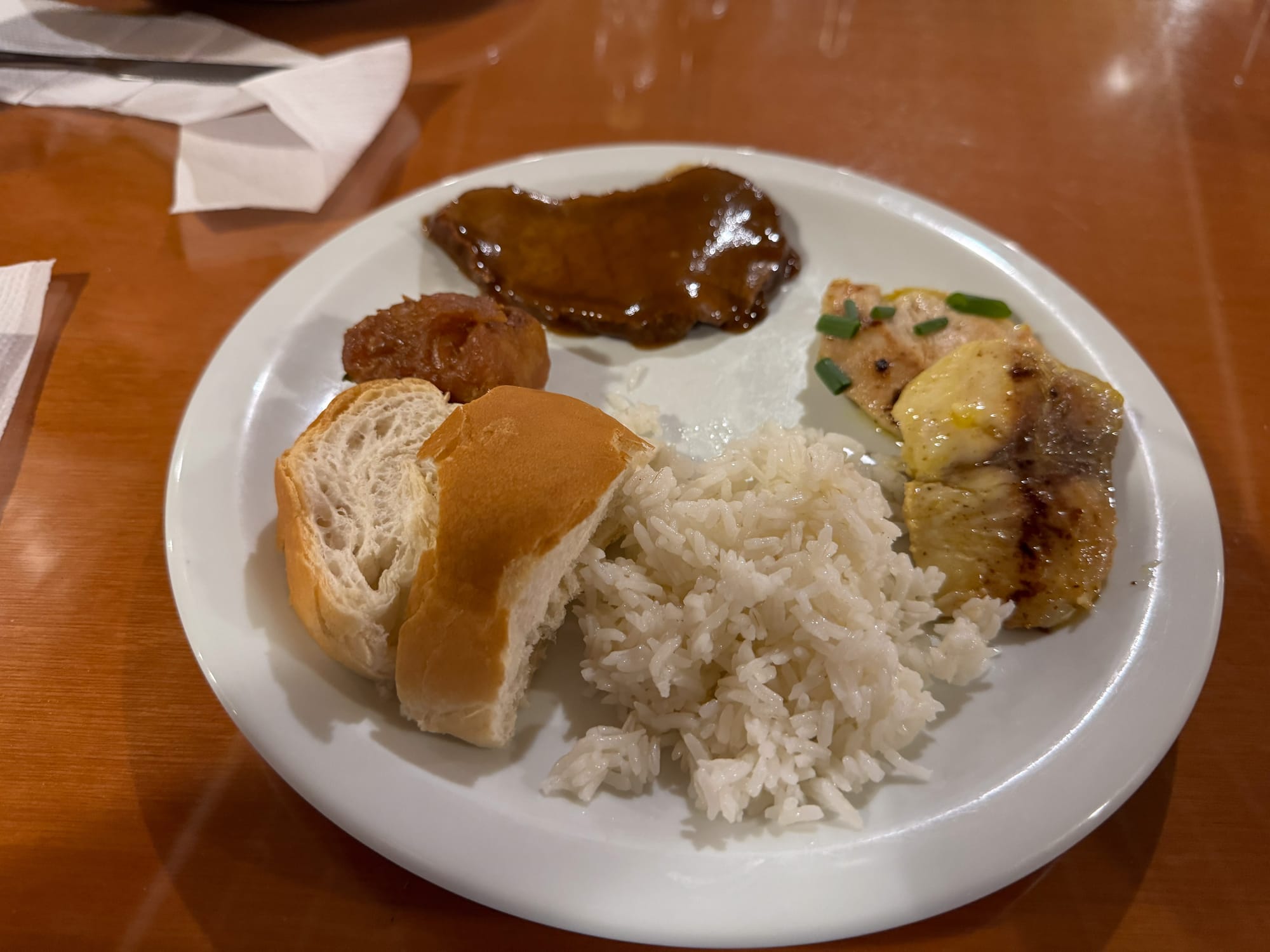This August, my wife and I traveled to Brazil to photograph Jaguars in their natural environment. After leaving our house for the airport, it took over 28 hours of continuous travel to reach our destination, the Pantanal wetlands.
The Pantanal is larger than 29 US states combined and is home to 3% of the planets wetlands. It is conservatively estimated to contain 1.4 billion acres.
Our trip started with a direct overnight flight to São Paulo, Brazil. Upon arrival at Newark International Airport, we headed to the lounge to grab some food. We were lucky enough to have access to the United Polaris Lounge.

Our flight boarded on time, but take off was delayed by about 40 minutes because a passenger lost their passport at some point during the boarding process. Once in the air, meal service began. We both pre-ordered the same meal, Seared Asian short rib with Asian style BBQ sauce, coconut jasmine rice, and stir fried vegetables. The ribs were tender and pretty good.

We arrived in São Paulo around 6am. We had several hours until our next flight to Cuiabá. We headed to the lounge to grab some breakfast.

Upon arrival in Cuiabá, we met up with our guide Marcos. Marcos works for the tour company Pantanal Jaguar Safaris, which we used to arrange this trip. We loaded our bags into the back of Marcos’s SUV and began the long, five hour journey into the Pantanal. We drove out of Cuiabá for about one and a half hours and approached the Transpantaneira Road. It is a long dirt road that crosses the Pantanal.
The Transpantaneira road covers over 147km and contains over 130 bridges, most of which are wooden.
Before we hit the dirt road, Marcos stopped at a local shop to let some air out of the tires to make the ride a bit smoother. I think he should have let more air out!

Once we hit the dirt road, the bumpy ride would last for hours. Shortly after starting the road, we came across the place where there is a large sign that you cross under when you enter the road. It basically is like a welcome sign to the Transpantaneira Road. I have seen numerous pictures of it online and asked Marcos if we could have our picture underneath it. He snickered a little and said “maybe”. He then informed us that a truck had hit the sign 10 days ago and broke it. He wasn’t sure if it was fixed yet and would stop if it was. Sadly, it was not fixed. I took a picture of where it should be.


Along our drive, the landscape changed from a dusty, dry environment to a more lush forest. The once empty water holes under the bridge are now filled with water which attracts numerous animals including birds, caiman, and capybaras. Marcos informed us that there are almost as many caiman in the Pantanal as the population of São Paulo. There is an estimated 10 million caiman here!

As we continued our very bumpy drive, I began to realize that we have never traveled to such a remote place before. Even on Africa Safaris, you can sometimes see other camps or villages, or maybe lights in the distance. Here, in the Pantanal, there was just empty Savannah every direction you looked. As the sun set, I could not see any lights in the distance. I asked Marcos if there was any cell service out this far, to which he replied “not really”. I then asked him what the closest hospital was, in case someone had an accident. He said it would be about a five hour drive, back where we came from. Medical flights could be an option, but the pilot has to fly with a licensed doctor which would take time to arrange, so driving is still most likely the quickest option.
We arrived to Hotel Pantanal Norte around 6:15pm in the dark. We were shown to room 14 which overlooks the River Cuiaba. The accommodations are basic, but comfortable. Heat, air conditioning and pretty good WiFi provided by Starlink.

Dinner was at 7pm, so we unpacked our bags, got our gear ready for the morning outing, and made our way to the dining hall. Marcos met us there and explained how our first boat safari would work. For the next two days, our schedule was as follows:
4:15am - Wake up
5:00am - Breakfast
5:30am - Sunrise, walk to the dock and board the boat
11:45am - Return from the safari
12:00pm - Lunch
2:00pm - Walk to the dock and board the boat
6:00pm - Sunset, return from the safari
7:00pm - Dinner
With the very few hours of down time, we would charge camera batteries, backup photos, and change clothes. It was a pretty intense schedule. We expected it to be similar to African safaris, but we spend much more time out searching for the Jaguars than we expected to. They are hard to find at times, so the more time spent on the river, the better.
Dinner consisted of a buffet style setup with various meats, rices, and sides. The food was better than we expected and we didn't find a single thing we disliked. We even had Piranha Soup one night!



After we finished up dinner, we headed back to the room and went to bed. We were exhausted from our 28 hour travel day and had to get up early to start the search for Jaguars. Hopefully the screeching sounds of the nearby Hyacinth Macaws don’t keep us awake. I will detail our first day on the river on the next post. Stay Tuned!


